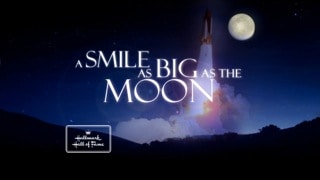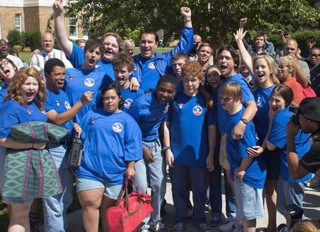Q&A: How Can We Increase STEM Opportunities for Special Needs Students?

 In the United States, 6.5 million students ages three to 21 are served by the Individuals with Disabilities Education Act (IDEA). Today, American schools are increasingly evaluating ways to best accommodate the needs of special needs students in order to provide them with access to K-12 and higher education learning opportunities. Before the introduction of IDEA roughly 25 years ago, learning opportunities for special needs students were hard to come by.
In the United States, 6.5 million students ages three to 21 are served by the Individuals with Disabilities Education Act (IDEA). Today, American schools are increasingly evaluating ways to best accommodate the needs of special needs students in order to provide them with access to K-12 and higher education learning opportunities. Before the introduction of IDEA roughly 25 years ago, learning opportunities for special needs students were hard to come by.
The upcoming ABC Family movie, “A Smile as Big as the Moon,” brings teacher Mike Kersjes and Joe Layden’s moving memoir about one special education class to life. Mr. Kersjes, a special education teacher for more than 10 years, shares the compelling story of how his class was the first group of special-ed students to attend Space Camp, a prestigious and competitive program at the U.S. Space and Rocket Center.
Mr. Kersjes works against opposition and skepticism to provide the opportunity and funding for his students to compete side-by-side with some of the nation’s brightest students in STEM education. The students, who span a wide range of disabilities such as Tourette syndrome, Down syndrome, dyslexia, and more, join together as a team and rise to the occasion. Each student’s unique talents play an important role in their success Space Camp. Mr. Kersjes and his class was the pioneer of “Space is Special,” a Space Camp program available today to students with learning disabilities.
The characters in this movie demonstrate astronaut Bob Springer’s words beautifully, “Like the U.S. Space Program, this is a compelling story that shows what can be accomplished when you are only limited by imagination and ingenuity. The reader can readily sense the personal dedication and love that Coach has for his students.”
In the movie, actor Logan Huffman plays Scott, a high school student in special education for dyslexia. Huffman’s character battles with frustration around his learning disorder and feels he doesn’t belong in the class. Throughout the story, Huffman empathizes with his classmates and becomes a team leader at Space Camp. Here, Huffman tells us how his own struggle in reading, writing, and math in school had an impact on his learning experience.

Q: What about the story “A Smile as Big as the Moon” inspired you to take on the role as Scott in the movie?
A: There were several aspects that made me really want to do this movie. Because I have dyslexia, I immediately identified with the character Scott.
Q: How does your role in the movie relate to your own experiences in education?
A: I struggled learning to read all though my schooling due to being dyslexic. I knew the horror and fear felt of being asked to read aloud in class. I knew what it was like to deal with the feeling of being looked down upon and made fun of.
Q: Your special education class went to space camp despite discouraging remarks from the school principal, classmates and others. How do peer and administrator perceptions play a role in student opportunities?
A: They play a huge role, especially at that age. Your school group is pretty much your whole world. You don’t look much at a life beyond that school building. It’s important that someone in that building believes in you.
Q: Your teacher, Mr. Kersjes, played a profound role in encouraging his students to succeed at each of the challenges at Space Camp. How can an educator influence the success of his or her students?
A: Mostly challenge them. Students know when the teacher views them as “special needs” and sort of sets them aside to simply accommodate them. They don’t want to feel “accommodated” they want to be challenged.
Q: In the movie, Mr. Kersjes said that the students in his class would rise gracefully to a higher bar if and when he set it. How can we create the environment for students with disabilities to thrive and exceed potential expectations?
A: I think the teacher needs to think outside the box. Most Learning Disabled kids really struggle with the traditional methods of learning like reading and math problems. Anything the teacher can do incorporate the curriculum other ways such as “on hand” projects and working as a team can be a big help.
Q: Currently in the United States, we’re experiencing a shortage in science, technology, engineering, and mathematics (STEM) graduates. In the movie, each of your classmates had a unique talent that was a vital asset to the team. How can we help students like your classmates discover their gifts and interests in STEM today?
A: I believe it’s going to take teachers with the talent and desire to recognize those skills in a student and put them in a situation to use those skills. The problem is sometimes the student may not even know they have the skill. Lack of self confidence is pretty common with the kids.
Q: In the movie, you were honored as the team leader. How can we foster more leadership opportunities for students with learning disabilities?
A: After spending time with Mike Kerjes I believe the key to success of the class was the he created a team. He used his experience as a football coach to understand how important it is when a student feels he or she is part of a team. Most of these kids were more than likely never part of a team and often feel as an outcast alone on an island. To answer the question I would say create team projects and allow different students to be the team leader.
Q: What lesson would you want students and educators to take away from the story, “A Smile as Big as the Moon?”
A: For the student, don’t put yourself down. Believe you can accomplish a great deal more than what others think you can. For teachers, believe in the kids and think outside the box to bring the best in your students. Look for opportunities to create teamwork for your students.
ABC Family Television Netowrk airs “A Smile as Big as the Moon” January 29 from 9:00 p.m. to 11:00 p.m. EST.






0 Comments
Leave a Comment
Your email address will not be published. All fields are required.